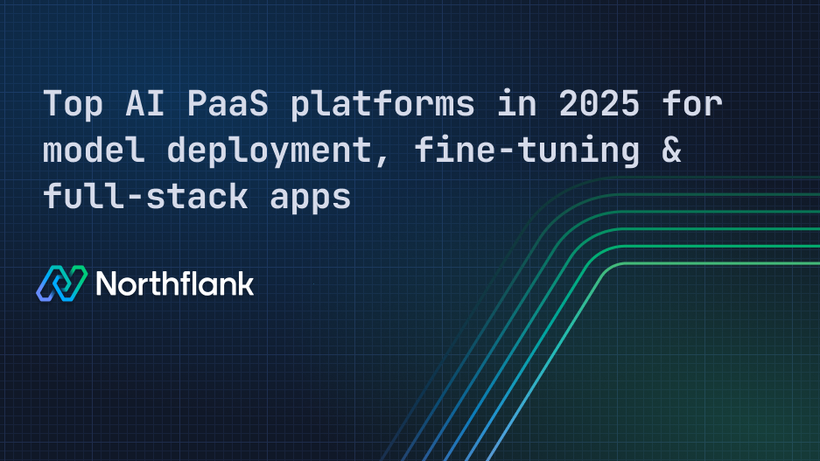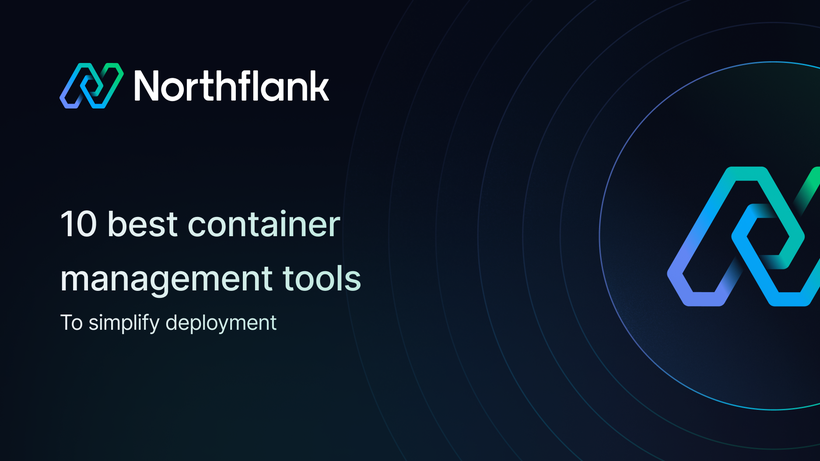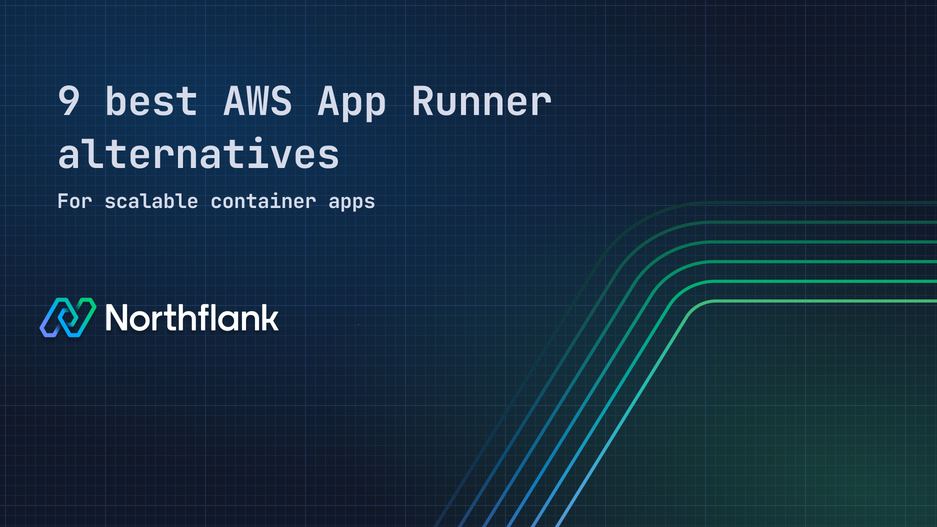

9 best AWS App Runner alternatives for scalable container apps
Is AWS App Runner the right choice for deploying containerized applications, or are there better alternatives?
If you’ve used AWS App Runner, you know it takes care of scaling, networking, and load balancing without much effort. That works well if you just need to deploy a web app or API, but it starts to feel limiting when you need more control, lower costs, or flexibility outside AWS.
App Runner is built to simplify deployments, not to handle background jobs, event-driven workloads, or complex networking needs.
Some platforms provide more customization, better pricing, or multi-cloud support. These alternatives give you options based on how much control you need over your workload.
You don’t have much time? Here’s a quick list of AWS App Runner alternatives:
- Northflank → A fully managed alternative with built-in CI/CD and multi-cloud support.
- AWS Fargate → A serverless AWS-native alternative with more networking control.
- Google Cloud Run → A fully managed serverless platform for Google Cloud users.
- Azure Container Apps → A flexible serverless option integrated with Azure Functions.
- DigitalOcean App Platform → A simple, Heroku-like alternative for quick deployments.
- Railway → A developer-friendly PaaS with automatic scaling and Git-based workflows.
- Render → A flexible PaaS with built-in security features.
- Google Kubernetes Engine (GKE) → A managed Kubernetes service with full customization.
- OpenShift → An enterprise-grade Kubernetes alternative with hybrid cloud support.
Each of these platforms takes a different approach to containerized applications. Let’s look at what makes them stand out.
You might start looking for an alternative in a couple of common scenarios. It could be because costs are adding up, you need more customization, or you want a platform that isn’t tied to AWS.
For instance, a developer on Reddit shared that they had to stop using AWS App Runner after running into unexpected limitations. They needed to integrate with RDS but found the setup unnecessarily complex. Debugging builds was frustrating due to the lack of detailed logs, and App Runner wasn’t built for background processing, which made it a poor fit for their workload.

If you’re in a similar position, these are some of the most common reasons to switch:
Scaling, networking, and deployment settings are mostly automated, which means less control over configurations like load balancing, private networking, and scaling policies.
AWS App Runner charges based on vCPU and memory usage (AWS Pricing), which can get expensive for high-traffic applications. For example, 1 vCPU and 2GB RAM on App Runner costs $56/month, while the same on Northflank costs $24/month. Some platforms provide more predictable pricing.
AWS App Runner is designed for AWS-native deployments. If you need multi-cloud flexibility, a platform like Northflank lets you deploy across AWS, GCP, and Azure (multi-cloud deployment guide).
If you prefer to stay within AWS but need more control, Northflank BYOC (Bring Your Own Cloud) gives you an AWS App Runner experience inside your AWS account while offering more flexibility, lower cost, and the ability to run in other clouds. This means you get the benefits of a managed container platform while keeping full control over your infrastructure.
Optimized for web applications and APIs but doesn’t support background jobs, batch processing, or event-driven workloads. If your application needs these, a Kubernetes-based solution or another managed service might be a better fit.
AWS App Runner automates builds and deployments but limits customization. It doesn’t support custom build steps, advanced deployment strategies, or flexible rollback controls. If you need more control over CI/CD workflows, platforms like Northflank allow custom pipelines, rollback policies, and Git-based automation (CI/CD on Northflank).
AWS App Runner has predefined compute configurations, with a maximum of 4 vCPUs and 12 GB RAM. This makes it less suitable for compute-heavy workloads, such as machine learning inference, high-traffic APIs, and large databases. You might need a more flexible alternative if your application requires more processing power or memory.
If you’ve run into any of these challenges, an alternative might work better for your use case. Let’s look at the best AWS App Runner alternatives and how they compare.
| Alternative | Fully managed | Customization & control | Multi-cloud support | Ideal for |
|---|---|---|---|---|
| Northflank | Yes | More flexible (custom networking, scaling, CI/CD pipelines) | Yes (AWS, GCP, Azure) | Teams needing multi-cloud, CI/CD, scheduled workloads, and Kubernetes support |
| AWS Fargate | Yes | More control (networking, scaling, IAM policies) | No (AWS-only) | AWS users needing serverless containers with more configuration |
| Google Cloud Run | Yes | Configurable scaling, networking, and rollbacks | No (GCP-only) | Developers needing serverless container hosting in GCP |
| Azure Container Apps | Yes | Integrated with Azure Functions & Kubernetes | No (Azure-only) | Teams deploying on Microsoft Azure’s ecosystem |
| DigitalOcean App Platform | Yes | Less control (simplified, Heroku-like setup) | No (DigitalOcean-only) | Developers looking for a simple, managed PaaS |
| Railway | Yes | Less control (minimal setup, automated scaling) | No (Railway-only) | Indie developers and startups needing quick deployments |
| Render | Yes | More flexible than Railway (custom scaling, networking) | No (Render-only) | Teams needing a flexible, managed PaaS |
| Google Kubernetes Engine (GKE) | No (requires setup) | Full Kubernetes control | Yes (multi-cloud capable with Anthos) | Teams needing full Kubernetes orchestration on GCP |
| OpenShift | No (self-managed option available) | Enterprise-grade Kubernetes with security features | Yes (supports hybrid & multi-cloud) | Enterprises needing Kubernetes with advanced security and governance |
We know you need a scalable and cost-friendly way to run your containerized applications. AWS App Runner simplifies deployments, but as we mentioned earlier, it limits control over networking, scaling, and configurations. Let’s go over the best alternatives in detail and see what makes them stand out.
You need a fully managed platform that scales your applications, integrates with CI/CD, and works across multiple cloud providers. Northflank handles deployments while giving you custom networking, storage, and scaling options.

Why choose Northflank
- Automatically scales your containers and microservices
- Built-in CI/CD workflows with GitHub, GitLab, and Bitbucket (See this guide on integrating GitLab and Bitbucket)
- Multi-cloud support across AWS, GCP, and Azure (See AWS, GCP and Azure on Northflank)
- Supports both stateless and stateful workloads, including persistent storage and scheduled jobs.
- Lower pricing compared to AWS App Runner.
What to keep in mind
- Works best for teams that need flexibility across multiple cloud providers
- Not tied to AWS-specific services, so some AWS-native integrations require setup
Works well for: Teams that need multi-cloud deployments, built-in CI/CD, and Kubernetes support
See how Weights company uses Northflank to scale to millions of users without a DevOps team
You want to stay within AWS but need more configuration options than AWS App Runner. AWS Fargate runs containers without managing servers, giving you better networking, security, and workload flexibility.
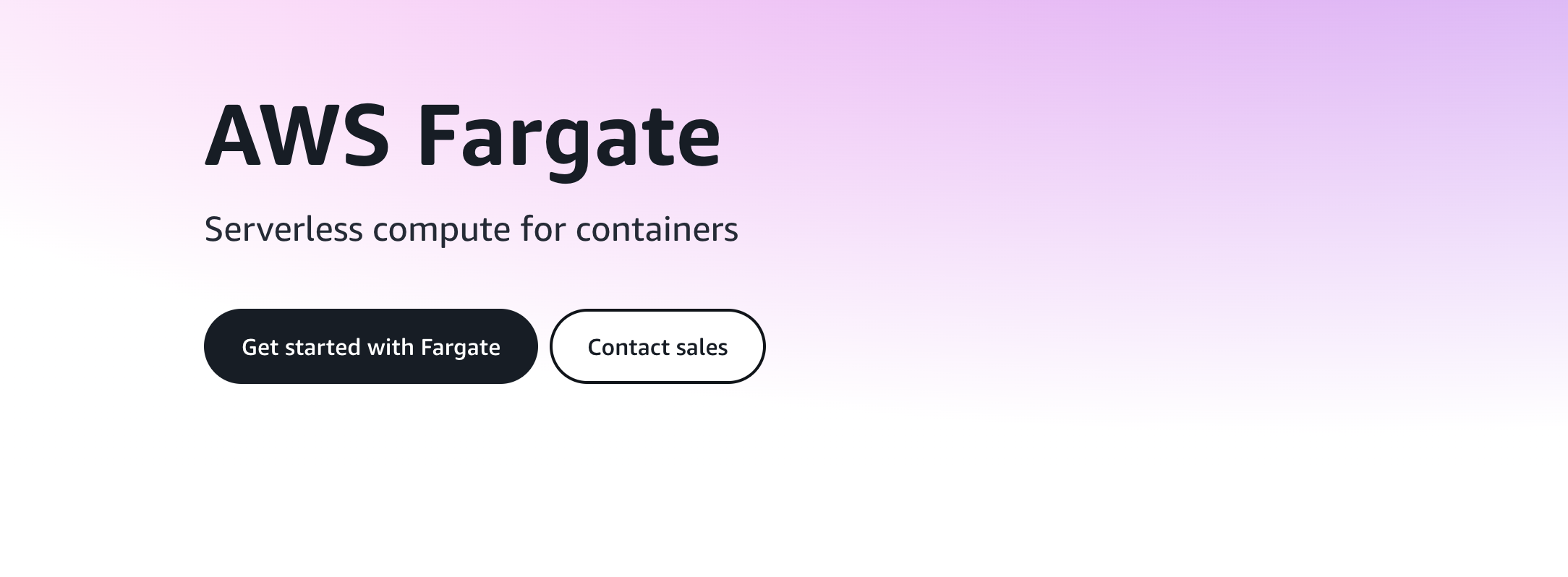
Why choose AWS Fargate
- Works with ECS and EKS, allowing you to orchestrate your containers
- More control over networking, IAM policies, and security groups
- Supports background processing and batch jobs, which App Runner does not
What to keep in mind
- Requires manual setup for VPC networking, task definitions, and scaling policies
- No automatic HTTPS provisioning, unlike AWS App Runner
Works well for: AWS users needing more customization, security controls, and workload flexibility
If you work with Google Cloud, Cloud Run provides a fully managed, serverless platform that scales applications automatically.
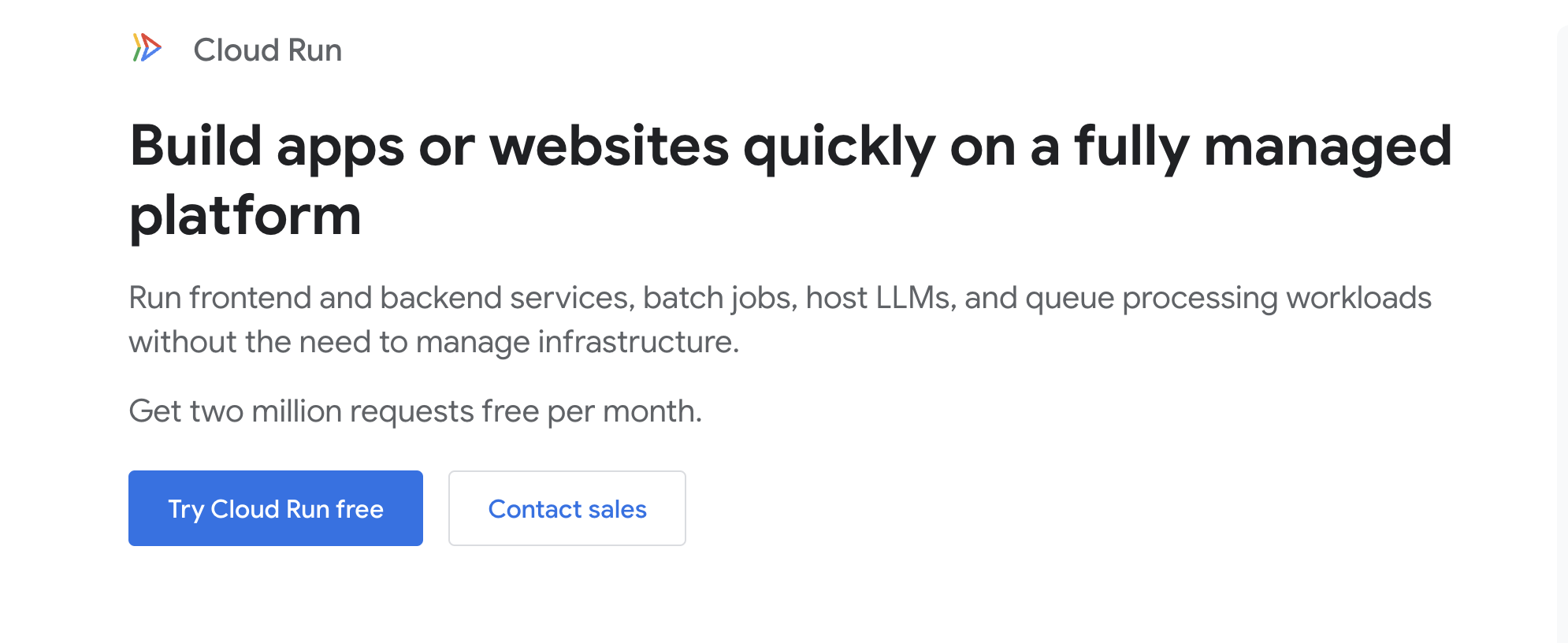
Why choose Google Cloud Run
- Supports Knative, making it easier to move workloads across environments
- Pay-as-you-go pricing that can help reduce costs for low-traffic applications
- More control over networking and rollbacks than AWS App Runner
What to keep in mind
- Limited to Google Cloud, so it is not an option for multi-cloud setups
- Some networking and security features require additional setup
Works well for: Developers who need a serverless container solution within Google Cloud
See the Best Google Cloud Run alternatives in 2025
You work with Azure and need a serverless container platform that integrates with Azure Functions and Kubernetes. Azure Container Apps allows you to run containerized applications without managing servers while providing event-driven scaling and built-in networking features.

Why choose Azure Container Apps
- Event-driven scaling and support for HTTP-based applications
- Kubernetes integration without requiring full cluster management
- Built-in security and networking tools for Azure-based applications
What to keep in mind
- Limited to Azure’s ecosystem
- Scaling options require manual configuration
Works well for: Teams that need serverless containerized workloads within Azure
You want a Heroku-like experience with automatic scaling and a simple interface. DigitalOcean App Platform makes container and static site deployments easier.

Why choose DigitalOcean App Platform
- Simple UI to deploy web services, databases, and static sites
- Lower cost for small applications
- Built-in auto-scaling
What to keep in mind
- Less control over networking and scaling compared to AWS App Runner
- Limited integrations outside the DigitalOcean ecosystem
Works well for: Developers who want a simplified hosting experience with minimal setup
See the 10 best DigitalOcean alternatives in 2025 for developers and teams
You need a simple way to deploy and scale applications without handling infrastructure. Railway provides an automated deployment process with minimal setup.

Why choose Railway
- Serverless deployment with automated scaling
- Supports containers, databases, and serverless functions
- Git-based CI/CD workflow for seamless deployments
What to keep in mind
- Less control over networking and scaling policies
- Limited to Railway’s platform
Works well for: Developers looking for a fast and easy way to deploy applications
Read this case study to see how Catalog found an ideal alternative to traditional PaaS offerings like Railway.
You need a fully managed hosting platform that provides private networking, security tools, and flexible configurations. Render gives you more control over deployments than Railway.

Why choose Render
- More networking and scaling flexibility compared to Railway
- Automatic HTTPS, private networking, and DDoS protection
- Supports complex applications with database integrations
What to keep in mind
- Not multi-cloud, limited to Render’s platform
- More setup required for advanced applications
Works well for: Teams that need a flexible, managed PaaS with more control over networking and security
You need full Kubernetes control to manage containerized workloads at scale. GKE provides a managed Kubernetes service with custom networking and security options.

Why choose Google Kubernetes Engine
- Supports Kubernetes-native workloads
- More flexibility for networking and scaling
- Can be deployed across multiple cloud providers with Anthos
What to keep in mind
- Requires Kubernetes knowledge to configure properly
- Not fully serverless, requires cluster management
Works well for: Teams that need full Kubernetes orchestration within Google Cloud
See how you can easily create or import Google Kubernetes Engine (GKE) clusters with Northflank BYOC in your own cloud account.
You need an enterprise-grade Kubernetes solution with security and automation features. OpenShift supports hybrid and multi-cloud environments.

Why choose OpenShift
- Supports hybrid and multi-cloud deployments
- Built-in security and compliance features
- Full control over Kubernetes workloads
What to keep in mind
- Requires Kubernetes expertise
- More complex setup than AWS App Runner
Works well for: Enterprises needing Kubernetes with security and governance features
Now we've gotten to a point where we've gone over 9 top AWS App Runner alternatives, but at the end of the day, the best choice depends on what you need from your container platform. If multi-cloud flexibility, built-in CI/CD, and Kubernetes support matter to you, Northflank lets you deploy across AWS, GCP, and Azure with custom networking and scaling.
If you want to stay within AWS but need more control, AWS Fargate gives you better networking, security, and workload management.
If your priority is low-cost automation, Google Cloud Run, Railway, and Render provide fully managed container hosting with automatic scaling.
💡 How to decide
- Do you need multi-cloud deployments? → Northflank supports AWS, GCP, and Azure
- Do you want to stay within AWS? → AWS Fargate gives more control
- Is cost your biggest concern? → Google Cloud Run, Railway, or Render are budget-friendly
- Do you need Kubernetes-based orchestration? → Google Kubernetes Engine or OpenShift
You don't have to settle if AWS App Runner doesn’t fit your needs. You can get started with Northflank for free and try a fully managed container platform built for flexibility and scalability.
If you're still deciding on an AWS App Runner alternative, these answers might help.
Is AWS App Runner cheaper than AWS Fargate?
App Runner charges per instance, while Fargate bills per CPU/memory used. App Runner can be cheaper for variable workloads, but Fargate offers more control. Northflank provides predictable, usage-based pricing with multi-cloud support.
What is the difference between AWS App Runner and AWS Elastic Beanstalk?
App Runner is built for containerized applications with automatic scaling. Elastic Beanstalk supports EC2-based applications and automates infrastructure setup.
Does AWS App Runner scale to zero?
Yes, but cold starts may affect response times.
Is AWS App Runner serverless?
Yes, it is fully managed and handles deployments, networking, and scaling.
What is the difference between ECS and AWS Fargate?
ECS lets you run containers on EC2 or Fargate. Fargate removes infrastructure management, running containers without provisioning servers.
